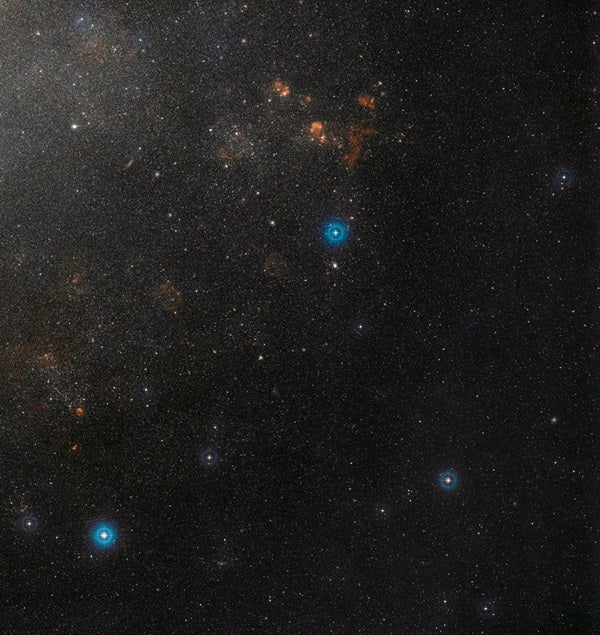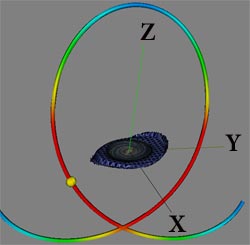A warp in the Milky Way’s disk of neutral hydrogen has puzzled astronomers since its 1957 discovery. Now, Leo Blitz and colleagues believe they’ve hit on an explanation involving the Milky Way’s most prominent satellites — the Large and Small Magellanic Clouds.
The starting point for the research was the Leiden-Argentina-Bonn survey of galactic neutral hydrogen, released last summer. Blitz, professor of astronomy at the University of California, Berkeley, and his colleagues Evan Levine and Carl Heiles used these data to produce a detailed map of our galaxy’s thin, gaseous disk. This hydrogen eventually condenses into molecular clouds that become stellar nurseries.
But as the astronomers studied the warped shape of the gas disk, they found something surprising. “We could describe the warp by three modes of vibration, or three notes, and only three,” Blitz says. The warp seems to form as a result of three different types of vibration: an up-and-down flapping of the disk’s edge; a saddle-shaped oscillation; and sinusoidal waves. These three “notes” occur at frequencies 64 octaves below middle C.
But attempts to pin the warp on the Magellanic Clouds’ gravitational influence failed in the 1970s. The satellites’ combined masses amount to only 2 percent that of the Milky Way’s disk — nowhere near enough to stir things up.
Since then, astronomers have recognized that the Milky Way is surrounded by a halo of unseen matter some 20 times more massive than all of our galaxy’s visible matter. Theorist Martin Weinberg at the University of Massachusetts, Amherst, teamed up with Blitz to create a computer model of the Magellanic Clouds’ influence on the Milky Way that includes dark matter.
What he and Blitz found is that the clouds’ wake through our galaxy’s dark matter excites a vibration, or resonance, at the center of the dark-matter halo. This, in turn, makes the Milky Way’s disk oscillate strongly in three distinct modes. The disk’s combined motion during the Magellanic Clouds’ 1.5-billion-year orbit resembles the edges of a tablecloth flapping in the wind.
“Dark matter is needed to produce the strong bending,” Blitz says.
“People have been trying to look at what creates this warp for a very long time,” Weinberg says. “Our simulation is still not a perfect fit, but it has a lot of the character of the actual data.”
Because many galaxies have warped disks, similar dynamics might explain them as well. “Many galaxies may have these modes,” Blitz says, and studying them may provide another approach to explore a galaxy’s invisible matter.











